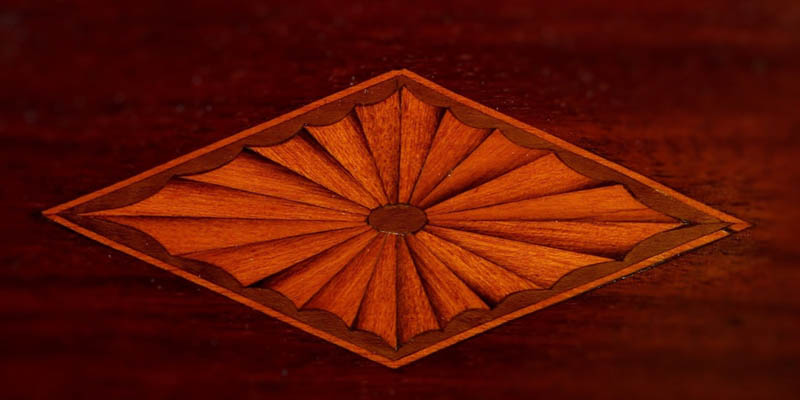Marquetry is the art of creating decorative designs and pictures by skillfully utilizing the grain and colors of thin veneers, or other materials such as shell. Skilled marquetry art practitioners created intricate depictions of animals, plants, landscapes, mythological creatures, battles, kings or queens, and just about anything else they could think of that would please a royal or noble patron.
These depictions are cut and assembled from wood veneers. The resulting decorative piece is then affixed to the surface of a piece of furniture to create a smooth, seamless, and beautiful surface for a sideboard, cabinet, or table.
There are different types of marquetry. In addition to cutting and piecing together veneers of different colored wood, some marquetry artists use an inlay technique. They carve out their design in a wood veneer and then use inlays of wood, shell, or ivory to create the colors and shading of the image they want to produce.
Marquetry can be traced back to the Egyptian Hieroglyphs which showed that inlays were used in making caskets. These ancient artisans would carve out an area in wood and heat up animal bones and skin to create glue, which was then used to secure a corresponding piece of stone, metal, wood or shell into place.
In the mid-16th Century, innovations in spring-driven clocks brought about the fretsaw. This handheld tool allowed craftsmen to precisely cut pieces of inlay. The approach now was to glue pieces together into a sheet which was then affixed onto a surface. The designs became much more intricate and complex.
Marquetry schools sprung up in France, Germany and Holland between the 16th and 18th Centuries. Exquisite examples of marquetry furniture were being created for royalty.
In the 17th Century floral and scroll designs were becoming popular. Also, making its debut was parquetry, a more geometric style.
Eventually, marquetry made its way out of Europe and into America and beyond. There are still a few professional marquetarians today, but the most innovative work often comes from amateurs, as they are able to create more labor intensive, unique works of art.
The primary materials used in marquetry today are natural wood veneers from a thousand different species of tree from around the world.

